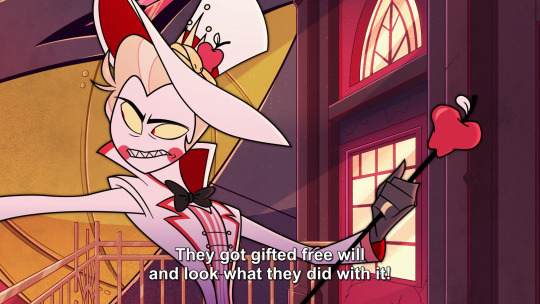#SERP features
Explore tagged Tumblr posts
Text
Rich Results: What They Are and Why They Matter for SEO
Discover what rich results are, how they work, and why they matter for SEO. Learn about structured data, types of rich results, and how to boost your search visibility with enhanced snippets. Rich Results: What They Are and Why They Matter for SEO In the ever-evolving landscape of Search Engine Optimization (SEO), staying ahead means understanding and leveraging every tool available to enhance…
#enhance SERP listing#FAQ schema#Google rich results#how to add rich snippets#improve CTR SEO#JSON-LD SEO#rich results#rich snippets#schema markup#search engine optimization#SEO ranking factors#SEO rich results#SERP features#structured data SEO#what is rich result
0 notes
Text
What Is SERP and Why It Matters for SEO Success?

What is SERP?
Simple—it's the digital menu Google serves up every time you search for something.
But, well, it's also the reason your “high-quality content” is rotting in Google's basement while competitors with half your talent are swimming in traffic.
You thought ranking on Google was about writing valuable content? Cute. That’s like assuming a good résumé gets you hired without networking. SERP—the Search Engine Results Page—is where businesses either get seen or get erased.
Here’s a sobering fact: 75% of users don’t scroll past Page 1. And the #1 result gets 10 times more clicks than the tenth. So, if your brand isn’t showing up in the right SERP features, you’re losing clicks, feeding Google’s machine while your competition laughs all the way to the bank.
This isn’t about what Google says matters—it’s about what Google actually rewards. And right now, it’s not enough to be “good.” You need to be everywhere Google wants you to be. Let’s fix that.
What Is SERP?
A Search Engine Results Page (SERP) is the page you see after entering a query into a search engine like Google. It's the digital battleground where websites vie for your attention, each hoping to be your chosen click. But let's be honest: if you're not on that coveted first page, you might as well be invisible.

How Search Engines Generate SERPs
Search engines like Google use complex algorithms to determine which pages appear on a SERP. When you type a query, the search engine scours its vast index, evaluating pages based on relevance, quality, and user engagement. Factors like keyword usage, site structure, and backlinks play a role. But it's not just about what's on your page; it's about how the internet perceives your page.
The Role of Google Algorithms in Ranking Content
Google's algorithms are the gatekeepers of the SERP. They assess countless factors to rank content, including:
Relevance: Does your content match the user's query?
Authority: Is your site a trusted source?
User Experience: Is your site user-friendly and fast?
These algorithms are in constant flux, adapting to new trends and user behaviors. Staying updated with these changes is crucial for anyone looking to climb the SERP ranks.

Key Components of a SERP
Understanding the anatomy of a SERP is essential for effective search engine optimization (SEO). Let's break down its primary components:
Organic Search Results
These are the unpaid listings that appear because they're relevant to the search terms. Achieving a high rank here requires quality content, strategic keyword use, and a robust backlink profile. It's the digital equivalent of earning your place rather than buying it.
Paid Search Results
Also known as pay-per-click (PPC) ads, these are sponsored listings that advertisers pay to display. They typically appear at the top or bottom of the SERP. While they can provide immediate visibility, they require a financial investment, and their placement is clearly marked as "Ad."
SERP Features
Beyond the standard listings, Google enhances SERPs with various features to improve user experience:
Featured Snippets: Quick answers extracted from top-ranking pages, displayed prominently to address user queries directly.
Knowledge Panels: Information boxes that provide a snapshot of facts about a topic, often appearing on the right side of the SERP.
People Also Ask: A list of related questions that users commonly search for, offering additional pathways for exploration.
Optimizing for these features can significantly boost your visibility, as they often appear above standard organic results.
Local SERP Results
For location-based searches, Google displays local results, often accompanied by a map. These results highlight businesses and services near the user's location. Ensuring your business is listed and optimized on platforms like Google My Business can enhance your chances of appearing in these local SERP features.
How Search Engines Rank Pages on SERPs
So, you think sprinkling a few keywords into your content will catapult you to the top of Google's Search Engine Results Pages (SERPs)? Nah. Google's ranking algorithms are more intricate than a soap opera plot, and understanding them is crucial for your digital survival.
Google's Ranking Factors: The Unseen Puppet Masters

Google doesn't randomly decide which pages grace the coveted first page. Its algorithms evaluate numerous factors to determine a page's relevance and authority. Key elements include:
Relevance: Your content must align with the user's search intent. This isn't about stuffing keywords but providing genuine value that answers the query.
Backlinks: Think of these as endorsements from other websites. High-quality backlinks signal to Google that your content is trustworthy and authoritative. But beware: not all backlinks are created equal. Quality trumps quantity.
Content Quality: Original, informative, and engaging content is non-negotiable. Google's algorithms can sniff out fluff and duplicate content faster than you can say "plagiarism."
User Experience (UX): A user-friendly website with fast load times, mobile optimization, and intuitive navigation keeps visitors engaged and signals to Google that your site is worth ranking higher.
These factors are part of Google's ever-evolving algorithm, which aims to deliver the most relevant and high-quality results to users. Ignoring them is like trying to win a race with a flat tire.
The Impact of SEO Strategies on SERP Position
Search Engine Optimization (SEO) is a strategic approach to align your content with what search engines value. Effective SEO strategies include:
Keyword Research and Optimization: Identifying the terms your target audience uses and naturally incorporating them into your content. But remember, keyword stuffing is a surefire way to get on Google's bad side.
On-Page SEO: Optimizing individual pages with proper meta tags, headers, and image alt texts. It's like dressing your content in its Sunday best for the search engine crawlers.
Technical SEO: Ensuring your site's infrastructure is sound. This includes optimizing site speed, mobile responsiveness, and secure connections (HTTPS). A well-structured site is more likely to be favored by Google's algorithms.
Link Building: Acquiring high-quality backlinks from reputable sites. It's not about quantity but the quality and relevance of the links.
Implementing these strategies can significantly impact your SERP rankings. It's not magic; it's methodical, data-driven work.
Ranking High in Organic Results vs. Appearing in Featured Snippets
Climbing to the top of organic search results is commendable, but have you considered the prime real estate known as featured snippets? These are the concise answers that appear above organic results, often referred to as "position zero."
Organic Search Results: These are the traditional listings you're vying for. Ranking high here requires a blend of all the SEO strategies mentioned earlier.
Featured Snippets: To land here, your content must directly and succinctly answer common user queries. Structuring your content with clear headings, bullet points, and concise answers increases your chances.
While featured snippets can boost visibility, they can also lead to "zero-click searches," where users get their answers without visiting your site. Balancing both organic rankings and snippet optimization is key to maximizing traffic.
Why SERPs Matter for SEO & Digital Marketing
If you're still underestimating the power of SERPs in your digital marketing strategy, it's time for a reality check. Your position on these pages can make or break your online presence.
The Business Benefits of High SERP Rankings
Securing a top spot on SERPs isn't just about bragging rights; it has tangible benefits:
Increased Visibility: Higher rankings mean more eyes on your content. It's simple math: the closer you are to the top, the more traffic you attract.
Credibility and Trust: Users trust search engines to deliver the best results. Ranking high signals to users that your site is authoritative and trustworthy.
Higher Click-Through Rates (CTR): The top positions receive the majority of clicks. According to a study by Optify, the top three SERP results generate over 60% of clicks. If you're not in these spots, you're missing out on potential leads.
Competitive Advantage: Outranking competitors means you're capturing traffic they aren't. It's a digital turf war, and every position counts.
The Importance of SERP Optimization for Traffic and Conversions
Optimizing for SERPs isn't just about attracting visitors; it's about attracting the right visitors—those likely to convert. Here's why SERP optimization is crucial:
Targeted Traffic: Effective SEO targets specific queries relevant to your business, bringing in users actively seeking what you offer.
Improved User Engagement: High-quality content that ranks well also tends to engage users better, reducing bounce rates and increasing time on site—factors that further boost your rankings.
Enhanced Conversion Rates: Visitors from organic search often have higher intent, leading to better conversion rates compared to other traffic sources.
Ignoring SERP optimization is like setting up a shop in the desert and wondering why no one stops by.
How SERP Changes Impact Search Visibility
If you’ve ever wondered why your once high-ranking page suddenly tanked in search engine rankings overnight, blame Google’s never-ending algorithm updates. The search engine results page (SERP) isn’t a static list of links—it’s a digital gladiator ring where only the best-optimized content survives.
Google constantly adjusts how it ranks content, tweaks SERP features, and shuffles results to ensure users get the most relevant, useful, and engaging content possible (translation: whatever keeps people on Google longer).
Algorithm Updates: The Unseen Traffic Killers
Every few months, Google rolls out a core update, and businesses either gain massive visibility or vanish into the abyss of Page 2 and beyond. The updates target thin content, spammy SEO tactics, and low-authority sites, meaning if you're cutting corners with optimization, your traffic is at Google's mercy.
The March 2024 Core Update sent shockwaves through SEO, decimating AI-generated, low-quality content.
The Helpful Content Update rewards sites with genuine expertise and punishes those trying to game the system with keyword-stuffed fluff.
The rise of Search Generative Experience (SGE) means AI-generated answers are now competing with organic search results, reducing click-through rates for businesses.
SERP isn’t just changing—it’s becoming more selective, aggressive, and unpredictable. If you’re not optimizing for the latest SEO trends, your content might as well be invisible.
SERP Features Are Stealing Clicks (And You Need to Adapt)
Once upon a time, ranking #1 in organic search results meant getting most of the clicks. Not anymore. Now, featured snippets, knowledge panels, and “People Also Ask” boxes are hijacking traffic before users even see traditional listings.
Featured snippets give instant answers, reducing the need for users to click through to websites.
Knowledge panels dominate brand-related searches, ensuring Google controls the narrative.
People Also Ask (PAA) boxes generate endless follow-up queries, keeping users locked inside Google's search loop.
What does this mean for you?
If you’re not optimizing your content for these SERP features, you’re handing traffic to Google on a silver platter.
Adapting to SERP Changes: The Brutal Truth
Businesses that understand and adapt to SERP changes thrive. Those that ignore SEO trends fade into irrelevance.
If your site isn’t fast, mobile-friendly, and technically optimized, Google will downrank it.
If your content isn’t earning high engagement (time on page, clicks, interactions), your rankings will plummet.
If you’re not appearing in SERP features, competitors who do will steal your audience.
It’s not enough to “do SEO.” You need SERP analysis, real-time strategy shifts, and a deep understanding of how Google manipulates rankings.

Tips to Optimize for Higher SERP Rankings
You could write the most insightful, jaw-dropping content on the internet, but if Google doesn’t think you belong on Page 1, it might as well be buried in an unmarked digital grave. SEO and SERP are a ruthless ranking game, and if you’re not optimizing with precision, your competitors are getting your clicks, leads, and sales while you refresh your analytics in frustration.
To rank higher and actually get traffic, you need to understand how Google evaluates content and tweak your strategy accordingly. Here’s how to win the SERP war and start pulling in real, conversion-ready visitors.
Keyword Research & Content Optimization
SEO isn’t just about “using the right keywords.” Google is smarter than that. It’s about understanding search intent and creating content that directly satisfies user queries better than anyone else.
Most businesses cram keywords into blog posts and think they’ve optimized their content. Wrong. If you’re writing for Google’s algorithm and not the human searching for an answer, you’re getting outranked by sites that know how to serve both.
Focus on intent-driven keywords: Not just “high search volume” terms but long-tail keywords that align with real user needs.
Use related semantic keywords naturally: Google recognizes context, so mix in synonyms and variations.
Structure content for clarity and engagement: Users skim before they commit—use subheadings, short paragraphs, and digestible sections to keep them on the page longer.
You’re not ranking just because you used the right keywords—you’re ranking because your content actually answers what people are searching for in a way Google recognizes as valuable.
On-Page SEO Techniques
Google scans your pages like a hawk, looking for signals that your content is worthy of ranking. Here’s what needs to be airtight on every page:
Meta Titles & Descriptions: This is your first impression on SERPs. Make your title clickable, compelling, and keyword-rich. A weak meta description means lost traffic.
Headings (H1, H2, H3): Google uses headings to understand structure. A sloppy heading hierarchy confuses both users and search engines.
Structured Data & Schema Markup: If you want SERP features like rich snippets, you need to feed Google structured data that enhances your listing.
Internal Linking: Google loves connected content—internal links keep users engaged and help distribute ranking power across your site.
Without clean, optimized on-page SEO, even the best content will struggle to break past Page 2.
Improving Click-Through Rates (CTR) on SERPs: Because a Rank without Clicks Is Worthless
Ranking on Page 1 doesn’t mean anything if no one clicks on your result. A high SERP ranking without a high CTR is a waste of potential traffic—and Google notices when users skip your result.
What pushes users to click?
Compelling, curiosity-driven titles: A bland title like “SEO Tips for 2024” isn’t getting clicked. “SEO Hacks That Google Doesn’t Want You to Know”? Much better.
Rich snippets and schema markup: Enhanced listings with ratings, FAQs, and extra info stand out against plain-text results.
Clear meta descriptions: This isn’t just a summary—it’s an ad for your page. If your meta description doesn’t promise value, users will click elsewhere.
CTR directly impacts rankings. If users skip your page for another, Google interprets that as a sign your result isn’t valuable and may push you down.
Earning Featured Snippets & Other SERP Features: The Traffic Jackpot
A regular organic ranking is great. But getting a featured snippet? That’s SERP domination.
Featured snippets are Google’s way of answering queries without requiring users to click a link—and if your content is selected, your brand gets prime real estate on Page 1.
How do you win a featured snippet?
Answer common questions immediately and directly (no fluff, just the answer).
Use structured lists, numbered steps, or concise definitions.
Target question-based search queries (e.g., “What is SEO?”).
Ensure your page is already ranking on Page 1.
Google won’t pull answers from low-ranking sites, so ranking well is the first step before securing a snippet.
If You’re Not Fighting for SERP, You’re Losing
By now, it should be painfully clear: The search engine results page is where businesses either dominate or disappear.
SEO and SERP go hand in hand. If your site isn’t optimized for SERP features, search intent, and algorithm changes, then your competitors are getting your traffic while you fade into digital irrelevance.
So what’s the next move?
SERP isn’t about just ranking anymore—it’s about visibility, engagement, and staying ahead of constant Google changes. If your current strategy isn’t built around that, you’re playing SEO on easy mode while your competition is in expert mode.
If your content isn’t optimized for what actually ranks, then you’re just handing Google free content to display in its SERP features while getting nothing in return.
Frequently Asked Questions:
READ MORE…
What's Happening to SEO? 8SEO Trends for 2025
0 notes
Text
Best SEO Practices 2025: The Ultimate Guide to Ranking Higher
Table of Contents Introduction Why SEO is Important in 2025 Top SEO Trends for 2025 Core SEO Strategies for Higher Rankings Content Optimization for 2025 Technical SEO Best Practices Link Building and Off-Page SEO Mobile and Voice Search Optimization AI and Automation in SEO User Experience (UX) and Core Web Vitals Experiments and Case Studies FAQs People Also Ask (PAA) Knowledge…
#AI in SEO#AI-driven SEO#Best SEO practices 2025#content optimization#Core Web Vitals#Digital Marketing Strategy#digital-marketing#E-E-A-T#Featured Snippets#Google ranking factors#keyword-research#link building#local SEO#Marketing#mobile SEO#off-page SEO#on-page SEO#organic traffic growth#organic-traffic#page experience#Search Engine Optimization#seo#SEO Case Study#SEO Trends 2025#SERP optimization.#structured data#technical SEO#user experience#voice search SEO#website ranking
3 notes
·
View notes
Text
Google Answer Box: How to Rank and Optimize Your Content

If you have ever typed a question in Google and a clear answer has been seen on the top of the page, then you have faced the Google Answer box. Also known as a special snipet, this result appears above all organic listing and gives users directly to answer without the need to click. Getting material in this box is a valuable way to increase visuality and traffic, for digital aberves, bloggers and SEO professionals. Let's see what Google North Box is, why it matters, and how to customize your content to rank in it.
What Is the Google Answer Box?
The Google North Box is a special result shown on top of Google's search engine result page (SERP). It draws a small, relevant snipet from a webpage to immediately respond to the user's query. This snipet can appear as a paragraph, list, table or even a video. Google uses its algorithm to select the material which assumes that the search is the best match for intentions.
Why Ranking in the Featured Snippet Matters
Being featured in the Answer Box is a strong indicator of trust from Google. It means your content is well-structured, relevant, and authoritative. The benefits of ranking in the Answer Box include:
Greater search visibility
Increased click-through rate (CTR)
More brand authority
Higher organic traffic
Even if your page isn’t ranked #1 in standard search results, appearing in the featured snippet puts you above your competition—literally and figuratively.
How to Optimize for the Google Answer Box
To earn a spot in the Google Answer Box, your content must answer user queries clearly and efficiently. Here’s how to do it:
1. Identify Common User Questions
Use keyword research tools like Seobix to find search queries related to your niche. Look for questions beginning with "what," "how," "why," and "when." These are more likely to trigger featured snippets.
2. Use a Clear Structure and Headings
Organize your content using subheadings like H2 and H3. Break up your article into sections that are easy to scan. If your content is answering a question, state the answer in the first sentence or two after the heading.
3. Provide Direct, Concise Answers
Google favors content that gives straightforward answers. If a user searches “What is SEO?”, you should define it in 40–60 words directly under a heading like “What is SEO?” Use short sentences and simple language.
4. Format for Snippet Types
Depending on the query, Google may display your answer as:
A paragraph
A numbered or bulleted list
A table
A video (if highly relevant)
Structure your content accordingly. For step-by-step instructions, use numbered lists in your HTML. For definitions, write a concise paragraph.
5. Improve Overall SEO Performance
Optimizing for the Answer Box also means your page should be fast, mobile-friendly, and rich in on-page SEO elements. Use SEO tools like Seobix to audit your pages, optimize metadata, and improve keyword usage.
Keep Updating to Stay on Top
Even if your content is painted in the answer box, it does not mean that it will remain forever. Contestants are always updating and adaptation to their pages. Keep your content an aligned with fresh, relevant and search intentions. Regular SEO checks using the free adaptation tool of the sebix can help you maintain or achieve your position.
Final Thoughts
The ranking in the Google Answer Boxes is one of the best ways to increase the visibility and rights of your website. You can promote your possibility of being painted by targeting general questions, using clear formatting, and focusing on SEO optimization. With the help of reliable devices such as seoBix, you can analyze the keywords, track performance, and continuously improve your content to stay further in search results. Start adaptation today- and you can only find your content on top of Google.
#direct answers#SERP feature#featured snippets#seo tools#direct answer box#Google Answer Boxes#Google Answer Box
1 note
·
View note
Text
#OpenCart SEO#pharmaceutical SEO#UX/UI optimization#AI-driven SEO#local SEO for pharma#technical SEO audit#keyword research for pharma#long-tail keywords#featured snippets#knowledge panel#OpenCart structured data#ecommerce SEO#pharma backlink strategy#search engine optimization#pharma content marketing#SERP ranking#Google featured snippets#mobile SEO for pharma#conversion optimization#pharma search intent#OpenCart schema markup#pharma website performance#backlink audit#GEO-targeting SEO#AI-driven keyword strategy
0 notes
Text
Zero-Click Searches: How to Adapt Your SEO Strategy for Google’s Changing SERPs

In the ever-evolving world of SEO, zero-click searches have emerged as a game-changer for businesses aiming to gain visibility on Google's search engine results pages (SERPs). These searches occur when users find the information they need directly on the SERP without having to click on a website. With features like Featured Snippets, Knowledge Panels, People Also Ask boxes, and Local Packs, more queries are answered on Google’s page, meaning fewer click-throughs to websites.
At SV Soft Solutions, we specialize in helping businesses optimize their SEO strategies for the changing digital landscape. As zero-click searches rise, it’s critical to focus on SERP visibility instead of merely aiming for clicks. In this post, we’ll explain what zero-click searches are, how they impact your SEO efforts, and how your business can adapt to benefit from this growing trend.
What Are Zero-Click Searches?
A zero-click search happens when Google provides users with the information they’re looking for directly in the SERP. This eliminates the need for users to visit a website to get their answers. Some of the key features contributing to zero-click searches include:
Featured Snippets: A highlighted box at the top of the SERP that answers user queries.
Knowledge Panels: Information-rich boxes that appear on the right side of the SERP, often for well-known people, brands, or locations.
People Also Ask: A dropdown list of related questions, offering users multiple answers.
Local Packs: Local business listings linked with Google Maps, providing information without requiring users to click through.
These features are designed to offer fast answers, reducing the need for users to leave the search results page. For businesses, this means fewer users clicking through to their websites, making zero-click searches a double-edged sword.
Impact of Zero-Click Searches on SEO
For brands, the rise of zero-click searches presents both challenges and opportunities. Traditional SEO strategies focused on driving clicks to a website, but with more users finding answers directly in the SERP, the focus is shifting towards getting your content featured within these zero-click features.
Key ways zero-click searches are changing SEO:
Lower Organic CTR: Fewer users are clicking on organic search results as they get answers directly on the SERP.
Increased Importance of SERP Features: Getting featured in Featured Snippets, Knowledge Panels, or Local Packs is now critical for visibility.
Local SEO Becomes Essential: For local businesses, appearing in Google Maps and Local Packs is crucial for driving customers.
Despite fewer clicks, adapting your SEO strategy for zero-click opportunities can keep your business in front of users in the right moments.
How to Adapt Your SEO Strategy for Zero-Click Searches
To succeed in the era of zero-click searches, businesses need to shift their SEO strategies towards targeting SERP features rather than focusing solely on rankings and clicks. At SV Soft Solutions, we recommend the following approaches to remain competitive in the search landscape.
1. Optimize for Featured Snippets
Featured Snippets are one of the most powerful opportunities for gaining visibility in zero-click searches. These snippets provide users with a direct answer to their query and appear above the traditional search results.
How to Optimize:
Write clear, concise answers to common questions.
Structure your content in ways that Google favors, such as numbered lists, bullet points, or short paragraphs.
Target long-tail keywords that users are likely to ask in question format (e.g., "How to..." or "What is...").
By appearing in Featured Snippets, your business can claim valuable space at the top of the SERP, even if users don’t click through.
2. Leverage ‘People Also Ask’ Boxes
The People Also Ask (PAA) feature gives users related questions and answers to their original search query. Ranking within these boxes offers another chance for your content to be visible in zero-click results.
How to Optimize:
Identify common user queries related to your business through tools like Google Search Console and Answer the Public.
Incorporate FAQs into your website content, focusing on answering relevant questions in a clear and direct manner.
Structure your answers similarly to how Google formats PAA responses—brief and to the point.
Appearing in the People Also Ask section can increase your brand’s visibility across multiple queries without requiring users to click through.
3. Prioritize Local SEO for Google Maps and Local Packs
For businesses with a physical location, optimizing for local searches is crucial in the zero-click era. Google Maps and Local Packs often provide users with all the information they need without ever clicking on a website.
How to Optimize:
Fully optimize your Google My Business profile with accurate business information.
Regularly collect positive reviews from satisfied customers to improve your ranking in local search results.
Ensure consistent NAP (Name, Address, Phone Number) information across all digital platforms.
Appearing in Local Packs and Google Maps helps drive foot traffic to your business, even without website visits.
4. Target Search Intent with Structured Content
As Google continues to improve its understanding of search intent, your content should align with what users are looking for—whether it’s informational, navigational, or transactional queries.
How to Optimize:
Research user intent behind keywords using tools like Ahrefs or SEMrush.
Create content that addresses user needs, such as blog posts for informational searches or product pages for transactional searches.
Use clear headers, subheadings, and structured data (schema markup) to make your content easier for search engines to understand.
Structuring your content based on search intent increases the likelihood of being featured in zero-click SERP features.
5. Build Your Brand’s Knowledge Graph
Knowledge Panels are another key area in zero-click searches. Optimizing for Google’s Knowledge Graph can help your business appear in these panels, offering key details to users without requiring a click.
How to Optimize:
Ensure your business is listed in reputable directories like Google My Business, Wikipedia, and Wikidata.
Implement structured data on your website using schema markup to provide Google with detailed information about your brand.
Build your online presence through social media and reputable backlinks.
By appearing in Knowledge Panels, your business can gain authority and instant recognition on the SERP.
Conclusion: Embrace the Future of SEO with Zero-Click Searches
As the digital landscape continues to evolve, the rise of zero-click searches means businesses must adapt their SEO strategies to stay visible. By focusing on optimizing for SERP features like Featured Snippets, People Also Ask boxes, and Local Packs, your brand can capture the attention of users directly on the search results page.
At SV Soft Solutions, we help businesses navigate these SEO changes and implement strategies that drive success in this new era of search. Ready to adapt your SEO for zero-click searches? Contact us today and let’s help your business stay ahead of the curve!
For more details
📞 Contact us today at +91 81211 15678
https://svss.co.in/zero-click-searches-how-to-adapt-your-seo-strategy-for-googles-changing-serps/
#Zero-Click Searches#SEO Strategy#Featured Snippets#Google SERP#Local SEO#Knowledge Panels#People Also Ask#Digital Marketing#SV Soft Solutions
0 notes
Text
Unlocking the Power of SEO - Boost Your Online Presence | HugeCount
In today’s digital age, having a strong online presence is crucial for businesses to succeed. One of the most effective ways to improve your online visibility and attract more organic traffic to your website is through search engine optimization (SEO). SEO is the process of optimizing your website and its content to rank higher in search engine results pages (SERPs) for relevant keywords. In this article, we will explore the basics of SEO and why it is important for businesses. Understanding the Basics of SEO: What Every Business Owner Should Know SEO, or search engine optimization, is the practice of […]
Source: https://hugecount.com/tech/unlocking-the-power-of-seo-boost-your-online-presence/
#featured posts#Off-Page Optimization#On-Page Optimization#Search Engine Optimization#SEO#SEO strategy#SERPs#Tech
0 notes
Text
youtube
0 notes
Text



Prompts used: • Explore how different cultures have different ways of experiencing seasons or have different names for them. • Calendars and timekeeping @yourcubitoyourculture
This is part the last part dedicated to Ukrainian names of the months. Check out other parts in the links below!!
Featuring Ren, Mumbo and Pearl!
autumn || winter || spring || summer
_______________________________
"Червень" (cherven') - June “Червець”(chervets') - cochineal, is a name of a bug that is active during this period, and was used to make red dye. Previously, the month shared the same name with the bug.
"Липень"(lypen') - July “Липа”(lypa) - linden, this name is associated with the flowering of linden trees and the period of collecting linden honey.
"Серпень" (serpen') - August “Серп”(serp) - sickle. This month marks the start of grain harvest in Ukraine. Sickle is the most known tool used in this process.
#nuno draws#your cubito your culture 2024#your cubito your culture#hermitcraft#hermitcraft fanart#rendog fanart#rendog#mumbo fanart#mumbo jumbo#mumbo#mumbo jumbo fanart#pearl hermitcraft#pearlecentmoon fanart#pearlescentmoon fanart#pearlescentmoon#укртамблер#укртумбочка#украрт#український тамблер#український tumblr
167 notes
·
View notes
Text
The cache feature historically let you view a webpage as Google sees it, which is useful for a variety of different reasons beyond just being able to see a page that’s struggling to load. SEO professionals could use it to debug their sites or even keep tabs on competitors, and it can also be an enormously helpful news gathering tool, giving reporters the ability to see exactly what information a company has added (or removed) from a website, and a way to see details that people or companies might be trying to scrub from the web. Or, if a site is blocked in your region, Google’s cache can work as a great alternative to a VPN.
As the Google cache feature is being taken away, I'd recommend using the Wayback Machine, Cached Pages, or archive.today to find cached links of webpages, especially if you want to get past firewalls.
742 notes
·
View notes
Text
Paradise Lost: How John Milton's 1667 work influenced "Hazbin Hotel"
I've been thinking about why the "fruit of knowledge" in Hazbin Hotel is depicted as an apple, as opposed to another fruit that would've been more accurate to the Middle East during the Fall of Man, as well as how Paradise Lost by John Milton (1667) influenced the show.

Per one source:
"Because the Hebrew Bible describes the forbidden fruit only as 'peri', the term for general fruit, no one knows [what exactly type of fruit it was]. It could be a fruit that doesn't exist anymore. Historians have speculated it may have been any one of these fruits: pomegranate, mango, fig, grapes, etrog or citron, carob, pear, quince, or mushroom."
Per Wikipedia:
"The pseudepigraphic Book of Enoch describes the tree of knowledge: 'It was like a species of the Tamarind tree, bearing fruit which resembled grapes extremely fine; and its fragrance extended to a considerable distance. I exclaimed, How beautiful is this tree, and how delightful is its appearance!' (1 Enoch 31:4)."
In Jewish and Islamic traditions, the "fruit of knowledge" is commonly identified with grapes. The Zohar explains that Noah attempted (but failed) to rectify the sin of Adam by using grape wine for holy purposes. Today, the "Noah grape" is still used to make white wine.

Furthermore:
"The association of the pomegranate with knowledge of the underworld as provided in the Ancient Greek legend of Hades and Persephone may also have given rise to an association with knowledge of the 'otherworld', tying-in with knowledge that is forbidden to mortals. It is also believed Hades offered Persephone a pomegranate to force her to stay with him in the underworld for 6 months of the year. Hades is the Greek god of the underworld, and the Bible states that whoever eats the forbidden fruit shall die."

So, how then did the apple become the foremost symbol of the "fruit of knowledge"? You can partly thank Paradise Lost by English poet John Milton, a work which the lore of Hazbin Hotel is based off of.
Milton published the book in 1667, a time when the hedonistic Restoration era was in full swing. The exiled King Charles II was restored to the throne as King of England in 1660, and was a party animal, with dozens of mistresses, and nicknamed both the "playboy prince" and "Old Rowley", the latter after his favorite lustful stallion.
However, the association of the "fruit of knowledge" began with a Latin pun long before Milton immortalized the association in Paradise Lost. Per the linked article above by Nina Martyris for NPR:
"In order to explain, we have to go all the way back to the fourth century A.D., when Pope Damasus ordered his leading scholar of scripture, Jerome, to translate the Hebrew Bible into Latin. Jerome's path-breaking, 15-year project, which resulted in the canonical 'Vulgate', used the Latin spoken by the common man. As it turned out, the Latin words for evil and apple are the same: 'malus'.
[...] When Jerome was translating the 'Tree of the Knowledge of Good and Evil', the word 'malus' snaked in. A brilliant but controversial theologian, Jerome was known for his hot temper, but he obviously also had a rather cool sense of humor.
'Jerome had several options,' says Robert Appelbaum, a professor of English literature at Sweden's Uppsala University. 'But he hit upon the idea of translating 'peri' as 'malus', which in Latin has two very different meanings. As an adjective, 'malus' means 'bad' or 'evil'. As a noun it seems to mean an apple, in our own sense of the word, coming from the very common tree now known officially as the 'Malus pumila'. So Jerome came up with a very good pun.'
The story doesn't end there. 'To complicate things even more,' says Appelbaum, 'the word 'malus' in Jerome's time, and for a long time after, could refer to any fleshy seed-bearing fruit. A pear was a kind of 'malus'. So was the fig, the peach, and so forth.'
Which explains why Michelangelo's Sistine Chapel fresco features a serpent coiled around a fig tree. But the apple began to dominate Fall artworks in Europe after the German artist Albrecht Dürer's famous 1504 engraving depicted the First Couple counterpoised beside an apple tree. It became a template for future artists such as Lucas Cranach the Elder, whose luminous Adam and Eve painting is hung with apples that glow like rubies.
Milton, then, was only following cultural tradition. But he was a renowned Cambridge intellectual fluent in Latin, Greek and Hebrew, who served as secretary for foreign tongues to Oliver Cromwell during the Commonwealth. If anyone was aware of the 'malus' pun, it would be him, and yet he chose to run it with it. Why?
Appelbaum says that Milton's use of the term 'apple' was ambiguous. 'Even in Milton's time the word had two meanings: either what was our common apple, or, again, any fleshy seed-bearing fruit. Milton probably had in mind an ambiguously named object with a variety of connotations as well as denotations, most but not all of them associating the idea of the apple with a kind of innocence, though also with a kind of intoxication, since hard apple cider was a common English drink.'
It was only later readers of Milton, says Appelbaum, who thought of 'apple' as 'apple', and not any seed-bearing fruit. For them, the forbidden fruit became synonymous with the 'malus pumila'. As a widely read canonical work, 'Paradise Lost' was influential in cementing the role of apple in the Fall of Man story."
To tie this back into John Milton's relationship with King Charles II of England, as mentioned, Milton originally served Oliver Cromwell, Lord Protector of England, and the English Commonwealth, which was formed with the overthrow and execution of King Charles I on 30 January 1649, following the bloody English Civil War (1642 – 1651).
The King's two sons - the newly-christened King Charles II, the elder, and James, Duke of York (King James II), the younger - fled into exile on the European continent. However, with the death of Oliver Cromwell on 3 September 1658 came the 2-year-long dissolution of the English Commonwealth, and the restoration of the monarchy.
As for Milton himself, we can look to an article by Bill Potter.
Milton, born on 9 December 1608, was around 51-52 years old when King Charles II was restored to the throne. He attended Christ's Church, Cambridge in his youth, and mastered at least six languages, as well as history and philosophy; making him, perhaps, the most knowledgeable poet in history. He spent more than a year travelling across Europe, conversing with and learning from intellectuals, linguists, poets, and artists, including the famous Galileo Galilei.
However, Milton was a controversial figure of his time, being unafraid to criticize institutions of authority; arguing that "divorce was Biblical", for which he was routinely condemned; joining the Puritans; penning the Areopagitica, a treatise on liberty in favor of Parliament and the Roundhead rebels, during the reign of King Charles I, arguing that the King must be held accountable by the people; and agreed with and justified the murder of King Charles I, for which Parliament hired him in 1649 as a propagandist and correspondence secretary to foreign powers, on account of his fiery manifestos against "the man".
The collapse of the Commonwealth with the death of Oliver Cromwell in 1658 did not deter Milton from continued political writing against the monarchy and the new public sentiment that brought about its Restoration under King Charles II in 1660. On the contrary, Milton - now totally blind, having lost his eyesight by the age of 44 in 1652, a decade earlier - began writing Paradise Lost in 1661, and spent the next six years dictating the work to transcribers.
A supporter of regicide, Milton was also forced into exile himself, and faked his own death, as Charles refused to pardon - and sought to execute - any of those directly involved with his father's murder. Milton's friends held a mock funeral for Milton on 27 August 1660, just months after the coronation of King Charles II on 23 April 1660.
King Charles II commented that he "applauded his [Milton's] policy in escaping the punishment of death [execution for treason] by a reasonable show of dying", but insisted on a public spectacle nonetheless by having Milton's writings burned by the public hangman.
After eventually obtaining a general pardon from King Charles II, Milton was imprisoned, and released, likely due to political friends in high places. He died, aged 64, in 1674. His theological views were sometimes considered heterodox by the best Puritans, and his political views came close to getting him executed on several occasions. His poetry, however, has endured as some of the greatest works in the English language, especially Paradise Lost; much of his greatest work was written during his 22 years of complete blindness.
One of the main factors in King Charles II deciding to grant a pardon to Milton was, ironically, Paradise Lost. While originally written by Milton as a scathing criticism of King Charles II and the monarchy - depicting Lucifer Morningstar as a sympathetic rebel against God, with King Charles II claiming that is right to rule came from "divine ordainment" - Charles II enjoyed the work, and authorized its publication on 20 August 1667. We know this because a 1668 copy of Paradise Lost in royal bindings by Samuel Mearne, bound lovingly in a fine red leather made of goat skins tanned with sumac, and stamped in gold with the royal cypher of King Charles II, was found. The endpapers bore a watermark with the royal arms of Charles II.

Per one Miltonian scholar: "The most single important event in Milton's life was the event against which he struggled most: the Restoration of Charles II, [and his relationship with the King]. Had it not come, we might have never had Paradise Lost...certainly, we should never have had [it] in [its] present power and significance."
Milton followed up Paradise Lost with Paradise Regained in 1671, three years before his death, with advice for King Charles II, urging the hedonistic Charles to "reign over himself and his passions":
"For therein stands the office of a King, His Honour, Vertue, Merit and chief Praise, That for the Publick all this weight he bears. Yet he who reigns within himself, and rules Passions, Desires, and Fears, is more a King; Which every wise and vertuous man attains: And who attains not, ill aspires to rule Cities of men, or head-strong Multitudes, Subject himself to Anarchy within, Or lawless passions in him which he serves." - John Milton, Paradise Regained, Book II, lines 463-472
To summarize: "If we must have a King back again, my Lord, please try to be a good man, unlike your father, who fell to his pride, [which was also the downfall of Lucifer]."
To quote another source: "Though the passage begins by noting that the office of a King is to bear the weight of public concerns, it is the control of one's private concerns that truly set a King apart as a virtuous character. Indeed, so important is self-command that any wise or virtuous man who attains it is like a king; any king who does not practice [self-command] is nothing more than a mere subject, ruled by anarchy and lawlessness."
Milton's words, too, echo a work written by Charles' grandfather, King James VI/I of Scotland and England: Basilikon Doron ("Royal Gift").
Per Wikipedia:
"'Basilikon Doron' (Βασιλικὸν Δῶρον) means 'royal gift' in Ancient Greek, and was written in the form of a private letter to James' eldest son, Henry, Duke of Rothesay (1594–1612). After Henry's death, James gave it to his second son, Charles, born 1600, later King Charles I. Seven copies were printed in Edinburgh in 1599, and it was republished in London in 1603, when it sold in the thousands.
This document is separated into three books, serving as general guidelines to follow to be an efficient monarch. The first describes a king's duty towards God as a Christian. The second focuses on the roles and responsibilities in office. The third concerns proper behaviour in daily life.
As the first part is concerned with being a good Christian, James instructed his son to love and respect God as well as to fear Him. Furthermore, it is essential to carefully study the Scripture (the Bible) and especially specific books in both the Old and New Testaments. Lastly, he must pray often and always be thankful for what God has given him.
In the second book, James encouraged his son to be a good king, as opposed to a tyrant, by establishing and executing laws as well as governing with justice and equality, such as by boosting the economy. The final portion of the Basilikon Doron focuses on the daily life of a monarch.
All of these guidelines composed an underlying code of conduct to be followed by all monarchs and heads of state to rule and govern efficiently. James assembled these directions as a result of his own experience and upbringing. He, therefore, offered the 'Basilikon Doron' ('Royal Gift') to his son, with the hope of rendering him a capable ruler, and perhaps to pass it down to future generations.
Overall, it repeats the argument for the divine right of kings, as set out in 'The True Law of Free Monarchies', which was also written by James. It warns against 'Papists' (Roman Catholics) and derides Puritans, in keeping with his philosophy of following a 'middle path', which is also reflected in the preface to the 1611 King James Bible. It also advocates removing the Apocrypha from the Bible."
King James VI/I further instructed his son and grandson:
"A good monarch must be well acquainted with his subjects, and so it would be wise to visit each of the kingdoms every three years."
"During war or armed conflict, he should choose old-but-good captains to lead an army of young and agile soldiers."
"In the court and the household, [a royal] should carefully select loyal gentlemen and servants to surround him. When the time came to choose a wife, it would be best if she were of the same religion and had a generous estate. However, she must not meddle with governmental politics, but perform her domestic duties."
"As for inheritance, to ensure stability, the kingdom should be left to the eldest son, not divided among all children."
"Lastly, it is most important...that [a royal] would know well his own craft...to properly govern over his subjects. To do so, [one] must study the laws of the kingdom, and actively participate in the council. Furthermore, [one] must be acquainted with mathematics for military purposes, and world history for foreign policy."
"[A royal] must also not drink and sleep excessively. His wardrobe should always be clean and proper, and he must never let his hair and nails grow long. In his writing and speech, he should use honest and plain language."
King James VI/I further supplemented Basilikon Doron with a written treatise titled The True Law of Free Monarchies: Or, The Reciprocal and Mutual Duty Between a Free King and His Natural Subjects.
"It is believed King James VI/I wrote the tract to set forth his idea of absolutist monarchism in clear contrast to the contractarian views espoused by, among others, James' tutor George Buchanan (in 'De Jure Regni apud Scotos'), [which] held the idea that monarchs rule in accordance of some sort of social contract with their people. James saw the divine right of kings as an extension of the apostolic succession, as both not being subjected by humanly laws."
Milton's own Areopagitica was a follow-up on De Jure Regni apid Scotos by George Buchanan, and also to The True Law of Free Monarchies, as well as the idea of the "divine right of kings". It takes its title in part from Areopagitikos (Greek: Ἀρεοπαγιτικός), a speech written by Athenian orator Isocrates in the 4th century BC.
Most importantly, Milton also wrote on the concept of free will: "Milton's ideas were ahead of his time in the sense that he anticipated the arguments of later advocates of freedom of the press by relating the concept of free will, and choice to individual expression and right."
The concept of free will, too, was a major topic explored in Paradise Lost. Per one source: "In 'Paradise Lost', Milton argues that though God foresaw the Fall of Man, he still didn't influence Adam and Eve's free will. [...] God specifically says that he gives his creatures the option to serve or disobey, as he wants obedience that is freely given [or chosen], not forced. Some critics have claimed that the God of the poem undercuts his own arguments; however, Milton did not believe in the Calvinistic idea of 'predestination' (that God has already decided who is going to Hell and who to Heaven), but he often comes close to describing a Calvinistic God. God purposefully lets Lucifer (Satan) escape Hell, and sneak past Uriel into the Garden of Eden, and basically orchestrates the whole situation so that humanity can be easily ruined by a single disobedient act. In describing the Fall of Man before it happens, God already predicts how he will remedy it, and give greater glory to himself by sending his Son [Jesus Christ] to die, and restore the order of Heaven."
In Hazbin Hotel, Adam also describes the Calvinistic idea of 'predestination', and that "the rules are black and white":

However, "This possible predestination leads to the theory of the 'fortunate fall', which is based on Adam's delight at learning of the eventual coming of the Messiah [from his bloodline]. This idea says that God allowed the Fall of Man, so that he could bring good out of it, possibly more good than would have occurred without the Fall, and be able to show his love and power through the incarnation of his Son. In this way, the free will of Adam and Eve (and Lucifer/Satan) remains basically free, but still fits into God's overarching plan."
However, there is one major flaw with this, and that is that we don't know if Jesus Christ exists within the Hazbin Hotel universe or not. Yet Charlie Morningstar, the daughter of Lucifer Morningstar and Lilith, and the "Princess of Hell", is depicted as a savior-esque figure within the show who, like God in Paradise Lost, encourages lowly sinners to choose obedience to God out of their own free will. More interestingly, Charlie does not come from Adam's bloodline; yet, while Lucifer decries 'free will', Charlie supports 'free will' instead.
Perhaps is is merely because Charlie, being the daughter of Lucifer and Lilith, claims to want to fulfill Lilith's "dream" of humanity being empowered in Hell ("The mind is its own place, it can make Heaven out of Hell, or Hell out of Heaven" - Lucifer, Paradise Lost); however, I think it also stems from Charlie having a genuine belief that 'free will', and people choosing to do good instead of evil, is "good" and "Godly".
True to Paradise Lost, this is also in fulfillment of God's plan; and, according to one fanfiction, why God allowed Charlie to be born to Lucifer and Lilith, so that sinners may be redeemed through Charlie.
For more on differing interpretations of 'free will', I suggest reading: "Free Will and the Diminishing Importance of God's Will: A Study of Paradise Lost and Supernatural" by Kimberly Batchelor (2016)
Excerpt: "'Paradise Lost' –and Milton’s purpose for writing the poem— is rooted deeply in postreformation Arminianism and this is apparent in its employment of free will. Chapter 1 argues that Milton turns to free will as a tool to justify the actions of God. Freedom of choice is God-given, and sets up a morality in which right and wrong are dictated by God. Chapter 2 shows that in 'Supernatural', free will is not given by a higher power; and, in fact, free choice functions as an act of defiance against God's will."
This raises the question: Is 'free will' given by God, using Lucifer as his vessel, in Hazbin Hotel, as in Paradise Lost? Or is 'free will' not given by a higher power; and, in fact, an act of defiance against God?
This brings us back around to our first question: Why is an apple, or 'malus', used to depict the "fruit of knowledge", especially if 'malus' means 'bad or evil', whereas Milton depicts 'free will' as God-given?
Well, for one, Lucifer still chooses to associate himself with apple symbolism and imagery, despite being skeptical of free will:


Based on the introduction to Episode 1, Charlie also views 'free will' as a gift (Miltonian), whereas Lucifer appears to view it as a curse.

However, Charlie also notes that it was through the 'gift' of free will that the "root of all evil" entered the world, for if mankind could choose to be good, then they could also choose to be evil ('malus').
John Milton states in Paradise Lost: "Of Man's First Disobedience, and the Fruit Of that Forbidden Tree [malus], whose mortal taste Brought Death (evil, malus) into the World, and all our woe."
Thus, the use of an apple specifically is likely a tie-in to what others have been speculating about a character that series creator Vivienne Medrano (Vivziepop) alluded to a while back: "The Root of All Evil".

However, "Roo" itself is depicted as possessing the body of a human woman, presumably Eve, the first one to eat the "fruit of knowledge":

Thus, we can discern that "Malus" likely refers to this character. (Also see: "Maleficent", a name that also uses the root word "mal", "evil".) As for Roo's intentions, if Charlie is "good" - and, if, in fact, Alastor was sent by "Roo" (Eve) - then they may want for Alastor to work on their behalf to "corrupt" Charlie, or make sure the hotel never succeeds.
This is because demonic power is tied to human souls, and there are "millions of souls" in Hell, which likely fuels the great power of "Roo". The more souls there are in Hell, the more powerful "Roo" becomes. The Overlords also get their demonic power from "millions of souls".

The deal between Eve and "Roo" might even be the first contract, or deal, between a human soul and a demonic entity; in exchange for 'free will', and the knowledge of good and evil, Eve allowed the "Root of All Evil" to inhabit her body, and to escape the void or prison it was confined to by Heaven (Hell?). (For one cannot be 'all-good' unless you attempt to 'eliminate' or 'ablate' evil; and, in Greek mythology, Zeus imprisoned the Titans in Tartarus for all of their evil deeds.)
Another possibility, brought up in an article by Gillian Osborne, is that Lucifer sees the "fruit of knowledge" as an apple, but it may appear as different fruits to different people, depending on how they view it. This also fits with Lucifer and angels being able to easily shapeshift.
In Paradise Lost, only Lucifer describes the fruit as an "apple" (malus), as he associates malus with "bad, evil", while the narrator also describes the fruit as "a mix of different colors" and peach-like. This then begs the question: "Did the fruit of knowledge of good and evil become 'evil' because Eve harbored resentment towards Adam?"
Quote: "Lucifer (Satan) gives Eve yet another hint that this tree may be more complicated than he wishes her to believe: although elsewhere in Milton's poem Eden is heady with its own newness, sprouting spring flowers left and right, the tree of knowledge is already old: its trunk is 'mossie'. Nevertheless, Lucifer claims to wind himself around the tree 'soon'; the quickness of his reported arrival stands in contrast to the timescales required to cover a fruit tree with moss (PL 9.589). Placing Lucifer's winding body between these two timescales—an easeful present and the inhuman scale of natural history—Milton suggests that there is something dangerous in entangling the past with the present. Yet, 'Paradise Lost' also makes deep biblical history feel like present politics for its readers. When Adam and Eve wander out of Eden at the end of the poem, they famously make their way not only into an earthly paradise, but also into the present. Eden's mossy apple tree therefore represents the pitfalls of conflating nature and history, of seeing any action in human history—even Eve's eating of an apple—as natural, if by nature, we mean inevitability. For Milton, history, unlike nature, is directed by humans, progressive, and, like the reading of 'Paradise Lost', hard work. While trees may inevitably collect moss the longer they live, Adam and Eve's labors in the garden, and our labors of reading, require agency and effort. Milton's poem refuses mourning the loss of Eden, [and the perfection of Heaven], in favor of a perpetual, melancholic, recreation of paradise: a present perfecting."
To quote Twisted: The Untold Story of a Royal Vizier, which also draws inspiration from John Milton's Paradise Lost: "It's an unfortunate situation...but you do have a choice [i.e. free will]."
#hazbin hotel#hazbin hotel analysis#hazbin#hazbin analysis#hazbin hotel meta#hazbin meta#hazbin hotel theory#hazbin theory#deep thoughts#john milton#paradise lost#eve hazbin hotel#lucifer hazbin hotel#lucifer morningstar#adam hazbin hotel#lilith hazbin hotel#lilith morningstar#roo hazbin hotel#root of all evil
261 notes
·
View notes
Text
Best AI Tools You Can’t Ignore in 2025: A Complete Guide
As AI continues to revolutionize digital marketing and SEO, these are the must-have tools that will give you a serious edge this year:
ContentShake AI: Quickly generate SEO-friendly, engaging content that ranks. Perfect for bloggers and marketers who need quality at scale.
Semrush Copilot: Your personal SEO assistant offering tailored recommendations to boost your site’s visibility and traffic.
Clearscope: Optimize your content with data-driven insights to ensure it hits the right keywords and satisfies search intent.
SurferSEO: Combines content creation and audit features to keep your pages competitive and up-to-date.
ChatGPT: More than just a chatbot—use it for brainstorming ideas, drafting outlines, and analyzing data faster than ever.
Copy.ai: Automate repetitive writing tasks like meta descriptions, product descriptions, and social media posts to save time.
SERP Gap Analyzer: Discover untapped keyword opportunities by analyzing your competitors’ rankings and content gaps.
Perplexity: Dive deep into content research with AI-powered insights that help you create richer, more authoritative articles.
In 2025, working smarter means leveraging AI tools to amplify your creativity and efficiency. Don’t get left behind—start integrating these into your workflow today!
3 notes
·
View notes
Text
The Google Core Update – March 2025: What You Need to Know
Table of Contents Introduction Understanding Google Core Updates Overview of the March 2025 Core Update Key Changes and Trends Impact on Websites and Rankings Case Study: Websites Affected by the Update SEO Experiments and Findings Impact on Click-Through Rates (CTR) Impact on Conversions and Revenue Sentiments of B2B and B2C Audiences Featured Snippets and Knowledge Panels People…
#AI Content Penalty#B2B SEO Impact#B2C SEO Strategies#CTR Optimization#Digital Marketing Strategy#digital-marketing#EEAT SEO#Featured Snippets#Google Algorithm Change#Google Algorithm Update#Google Core Update 2025#Google SEO Strategy#Google SERP Update#Google Webmaster Guidelines#High-Quality Content SEO#keyword-research#March 2025 Google Update#Marketing#Organic Search Traffic#organic-traffic#Search Engine Optimization#Search Intent#Search Visibility#seo#SEO Case Study#SEO Ranking Factors#SEO Recovery Plan#SEO Trends 2025#Structured Data SEO
1 note
·
View note
Text
Understanding Zero-Click Searches in the New Google SERP
Google is rapidly evolving its search experience. With the introduction of AI, as well as featured snippets, people are getting answers directly in the search results, without having to click a link at all. We call this a zero-click search. It is vital for a digital marketer or business owner to take advantage of this trend or else it is going to be difficult to be seen in the search rankings.
Google is trying to decrease clicks and increase a better user experience, which is making zero-click searches become much more commonplace. When a user types a question in the search bar, Google is now putting the answer at the top. This information might come from a knowledge panel, featured snippet, map, or even an AI generated summary, but the end result is users are getting what they need without having to visit a website.

How AI and SGE Are Shaping Search Results
Google's latest innovation, the Search Generative Experience (SGE), uses artificial intelligence to create a short answer or summary based on the user's query. This AI snapshot appears above all other search results. Instead of relying solely on website links, Google uses its AI model to provide a concise, helpful answer, often with source links shown below.
With SGE and zero-click searches working together, the traditional blue links are getting pushed lower on the page. This change affects how websites get traffic from Google. Businesses now need to optimize for visibility within these new formats to stay ahead.
Why Zero-Click Searches Matter for SEO
If your website is not utilizing zero-click tactics, expect to see falling web traffic. When users get answers before they click, your traditional SEO strategy may not be sufficient. That's why you need to change your content strategy based on the new way that Google is serving search results.
Concentrate more on featured snippets, FAQs, and structured data so you increase the chances that your content gets selected for a snapshot or snippet. This is especially relevant since Google's AI uses relevance, clarity and authority to choose content. Helpful and direct writing is now more important than ever.
How to Prepare for the Future of Google Search
The secret to getting used to the new Google SERP is understanding Google's goal - high-quality expert content that answers a user’s intent quickly. Optimize your content around clarity, which includes clear heading, answer-based formats, and proper keyword placement.
Using an SEO tool like SeoBix can help you find high-performing keywords, competitor analysis, and help you organize your content for the AI driven formats. SeoBix has a complete suite of tools for keyword research, on-page SEO analysis, backlink tracking and more. SeoBix will especially benefit when optimizing for modern features like SGE, featured snippets, and zero-click formats.
Conclusion
Zero-click searches and AI-generated search results are changing how people engage with Google. Today, it simply isn't enough for you to rank well and get clicks on your content, it's about being in the right position. This can be achieved by utilizing tools like SeoBix to stay on top of your SEO strategy and maximize your potential to be included on the search results page.
Businesses and content creators who want to engage with Google in the future need to adapt. We need to put our content with the answers up front, utilizing structured formats and intelligent SEO tools to create the right user experience and connections, so that if a user decides not to click on it, our brand at least gets some visibility. That is the new dynamic in marketing search.
1 note
·
View note
Text

DC Finest: Team-Ups - Chase to the End of Time by Bob Haney, Jim Aparo, Martin Pasko, Jerry Serpe, Len Wein and others. Cover by José Luis García-López and Dan Adkins. Out in March 2025.
"The Man of Steel and the Flash! The Caped Crusader and Black Canary! See the World’s Finest duo of Superman and Batman join forces with other DC superheroes in DC Finest: Team-Ups: Chase to the End of Time, collecting some of the most exciting team-up stories from the Bronze Age of comics from May 1978 to October 1979. Featuring the works of some of the greatest artists and writers in comics, this volume contains stories from DC Comics Presents #1-14 and The Brave and the Bold #141-155."
#dc finest#dc finest: team-ups#chase to the end of time#dc comics presents#superman#the brave and the bold#batman#dc comics#bob haney#jim aparo#martin pasko#jerry serpe#len wein#josé luis garcía-lópez#jose luis garcia lopez#dan adkins#trade paperback#collected edition#books#comics
12 notes
·
View notes